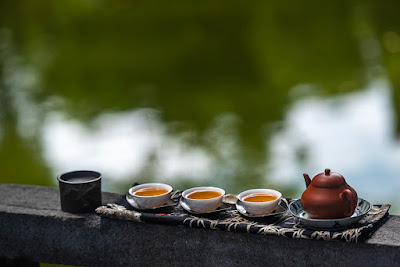 |
| DYL 104K |
DaYuLing 104K Oolong is also a luxury for the 0.01%! It's the most exclusive high mountain Oolong in the world. It comes from the most mythical place, where other plantations have been uprooted. Each spring and winter season, only 60 kg are produced. This means that there are just 800 packs of 75 gr that can be purchased each season. By comparison, the Domaine de la Romanée-Conti, Burgundy's top wine, produces 5500 bottles per year! (And a DRC bottle costs about 10,000 USD!)
The destination of my Da Yu Ling is the infinite universe of pure scents!
Millions of cubic meters of water are poured during the lift off of a spacecraft to reduce the sound and vibrations that could damage the equipment on board. For my Chaxi, one liter of water is enough!
My tea experience begins in near silence, comfortably and safely seated in my tea space. 4 to 5 grams of leaves will suffice. They must fully unfold in the pure silver teapot. This precious metal with the highest heat conductivity is where tea is high tech since the Tang dynasty (see the treasures of the Famen temple)! By the way, this dynasty is also when poets wrote most about the moon!
The brew of Da Yu Ling 104K shines bright and pure like four cold stars. The aromas and taste are as light and cool as it gets. I feel uplifted. Am I floating in the blue? Beyond darkness, I feel the sweet tea coating my palate. A powerful energy warms and relaxes my body. A new dimension opens up. Silver and porcelain bring me higher, farther. Taste and aroma combine. Beauty and light become one. I'm riding the dark dragon high and slow.
This journey through time, space and senses takes me to the stars! I connect to the vast, great unknown.







































